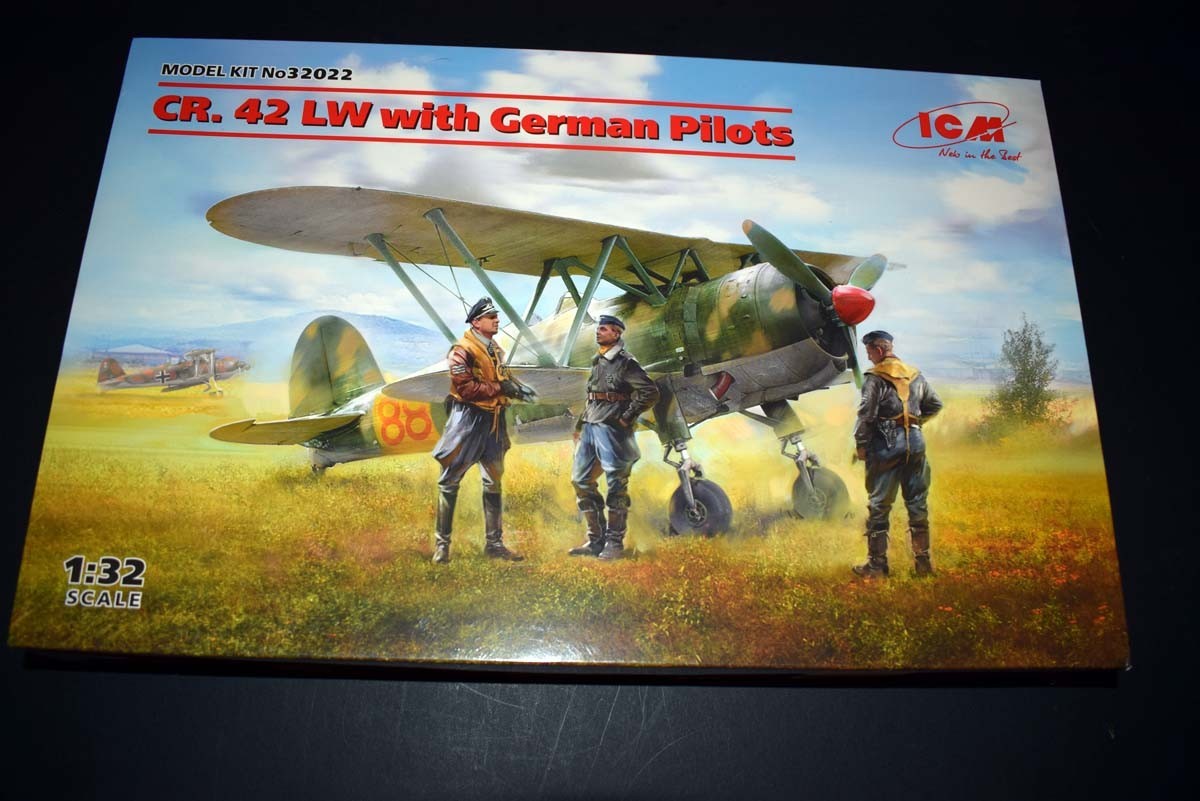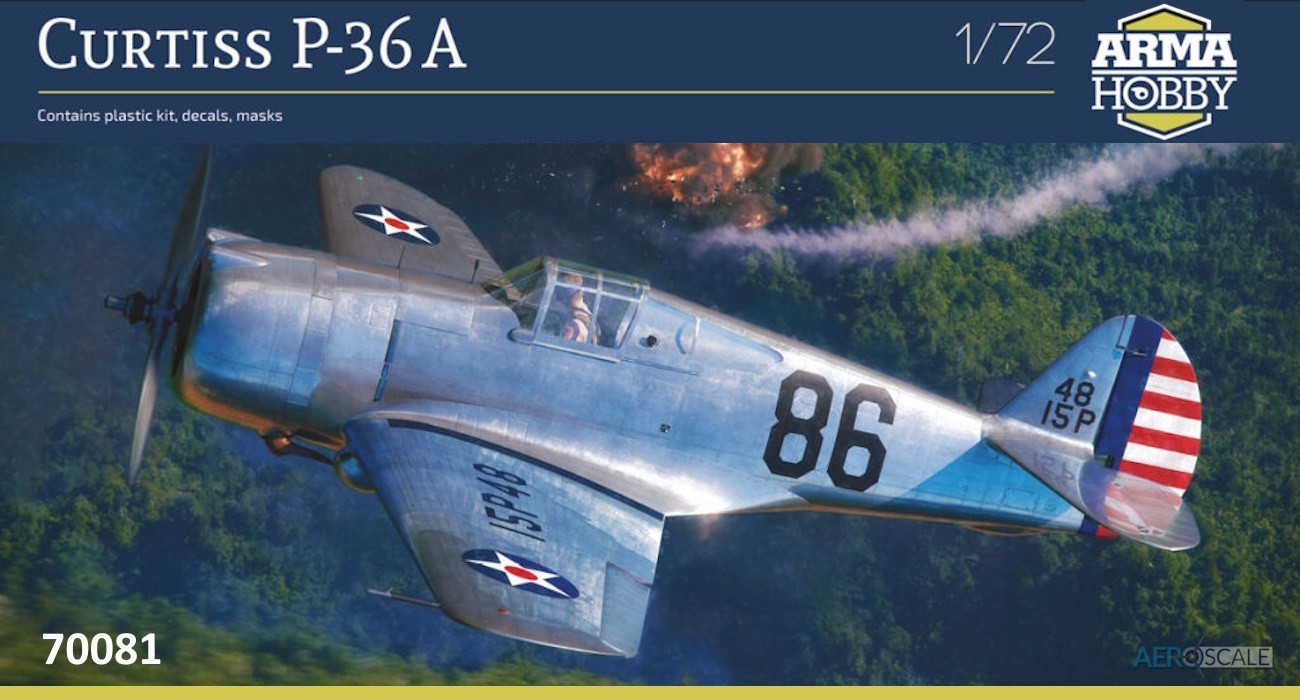Introduction
The following information is from the Royal Air Force Museum.
The CR42 was a delightful machine to fly and was the best biplane in service in 1940. Although the days of the biplane fighter were numbered it continued to take part in air operations until the end of 1943 and was built in greater numbers than any other Italian World War Two fighter.
This immensely strong and very manoeuvrable fighter first saw combat in the brief two week campaign over Southern France. Light losses against the French gave the Italians a mistaken impression that their tactics and aircraft were highly effective.
National pride and political prestige, rather than military necessity, led the Italian Dictator Mussolini to send a force of bombers and fighters to take part in the air battles against Great Britain. Arriving at airfields on the Channel coast in October 1940 they proved something of an embarrassment to the Luftwaffe who had resisted the move for some time. Bad weather and obsolescent equipment meant that the venture was nota success.
Little combat with British fighters took place over the British Isles but it did reveal the CR42's major weakness; its armament of two machine guns was no more than a World War One fighter and it was unable to inflict major damage on its opponents.
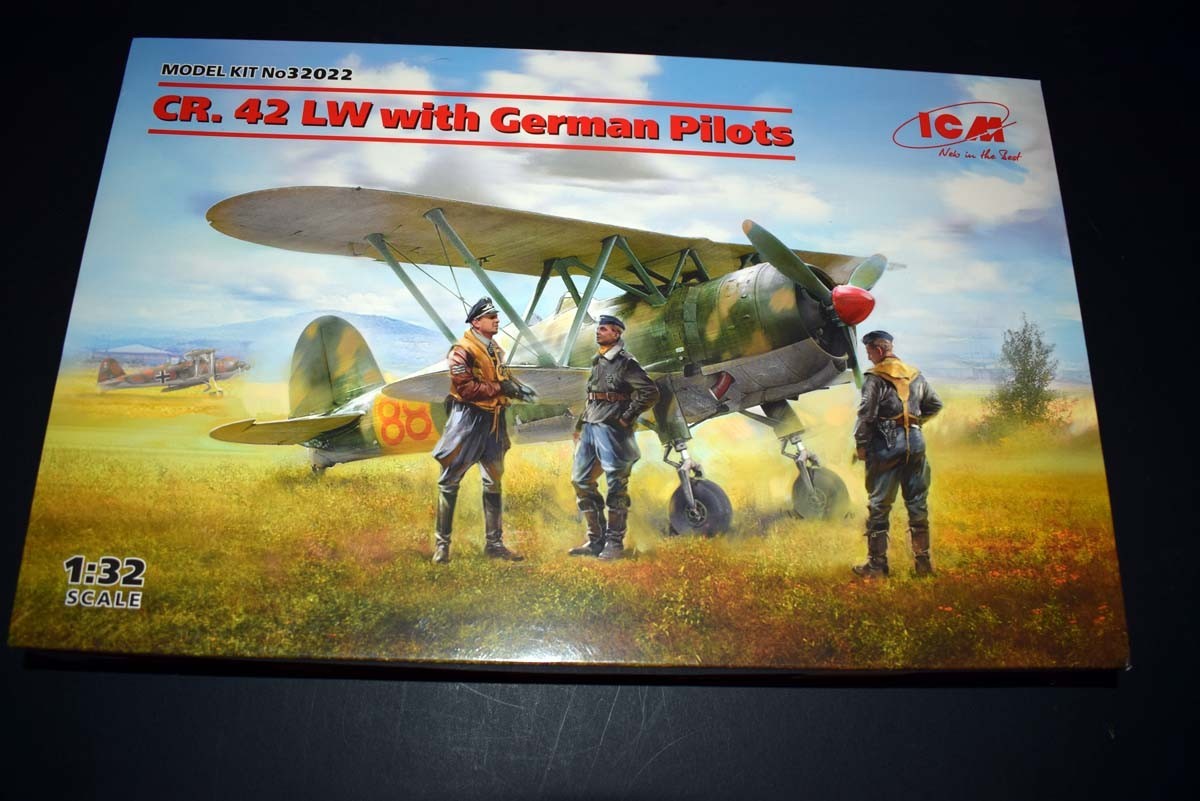
Review
The packaging in this offering is what has become the standard from ICM, a substantial cardboard tray and integrated lid, plus an additional card lid with the artwork on it. This isI feel up to the rigours of the postal system and something that ICM deserve recognition for. The sprues are packaged in a re-sealable plastic bag, which also contains a clear sprue inside its own plastic bag. An examination of the contents reveals some very cleanly moulded parts. Access to the parts for removal from the sprue is good, and that will be appreciated for the finer mouldings. The mouldings included in this offering do have some flow marks present on the larger parts, but these do not look or feel to have caused issues on them.
The Cockpit
Looking over the parts that make up this area of the model and comparing them with what I can see using online reference, tells me that what is provided by ICM appears to be correct. I will say that some of the detail could do with being crisper, but I suspect that any members who are concerned about this will be looking to the aftermarket to add the crisper detail and of course extra detail. I am again disappointed that ICM has made no effort with the seat harness detail, and itis a detail that must be included in a model of this scale as it will be obvious that it is missing to anyone who looks. The tubular structure of the aircraft has been replicated around the cockpit area and moulded on the interior halves of the fuselage is the skin attachment structure in this area. ICM has provided decals for replicating instrument dials.
Fuselage and Flight Surfaces
The fuselage of the model is provided in the usual manner of separate halves, plus detail panels. The fuselage itself has a mixture of cloth and metal surfaces, the metal surfaces have good shallow recessed panel lines. With the cloth aspects having a ribbing detail below the cloth, but I unfortunately cannot detect any texture. The glazing provided for the cockpit, is clear and has not been moulded overly thick, as so looks natural. At the end of the instruction booklet ICM has provided templates for protecting the glazing when painting. The tail structures both horizontal and vertical have separate flight control surfaces, and so can be set as the modeller desires. The wings of the model have been well tackled, having very good ribbed detail under the cloth coating that has been replicated, and positive locations for the wing support struts. The guide wires present on this aircraft, and their orientation have been covered at the end of the instruction booklet and is something that ICM have been doing a lot of lately with models of this type, and an aspect that I highly approve of. The control surfaces on the upper wing, again have been supplied separately, and so again can be set as the modeller requires.
Engine
The engine in this aircraft, is indicated to be a FiatA.74R1C air-cooled 14 cylinder radial engine. ICM has supplied both banks of radial cylinders, with reasonable detail of the cooling vanes, but the modeller looking to add a higher level of detail will need to consider adding the wire for the spark plugs. The oil tubes around the engine are well replicated. The engine exhausts are supplied in two halves, with the exit point on the engine cylinders correctly lining up with the pipes on the exhaust manifold. There is a port that sits on the rear of at least the right hand exhaust manifold which has not been replicated; I however believe that this will not be seen on the finished model anyway. There is also a significant amount of the engine which is not replicated at the rear, but again this cannot be seen under normal circumstances. The gear housing on the front of the engine is the correct shape and form, but you must make sure to correctly orientate it. The exhaust on this version of the CR42, is extended under the aircraft well beyond the pilots position, and has a hedgehog appearance on the last third, similar to that used on British bombers.
Undercarriage
The undercarriage on this aircraft is fixed. The tail wheel sits in a simple bulge, and so a small portion of the tyre and wheel is seen, and so is perfectly replicated here. The main undercarriage legs are provided in two versions, with and without flared cowlings around the wheels and have no brake lines present. I do not know if the lack of the flared cowlings on one version or the other is purely a case of ICM’s reference not showing them at a specific time and place, and beyond a minor aerodynamic feature I believe the modeller could use either, but the ones with the cowlings would be the more common I believe. Four under wing bombs are supplied with the model, and I am very pleased to see that ICM have made the bomb racks something you need to add, rather than take away. I do think that these larger bi-plane models that ICM are releasing look better clean with just the offensive machines guns where possible.

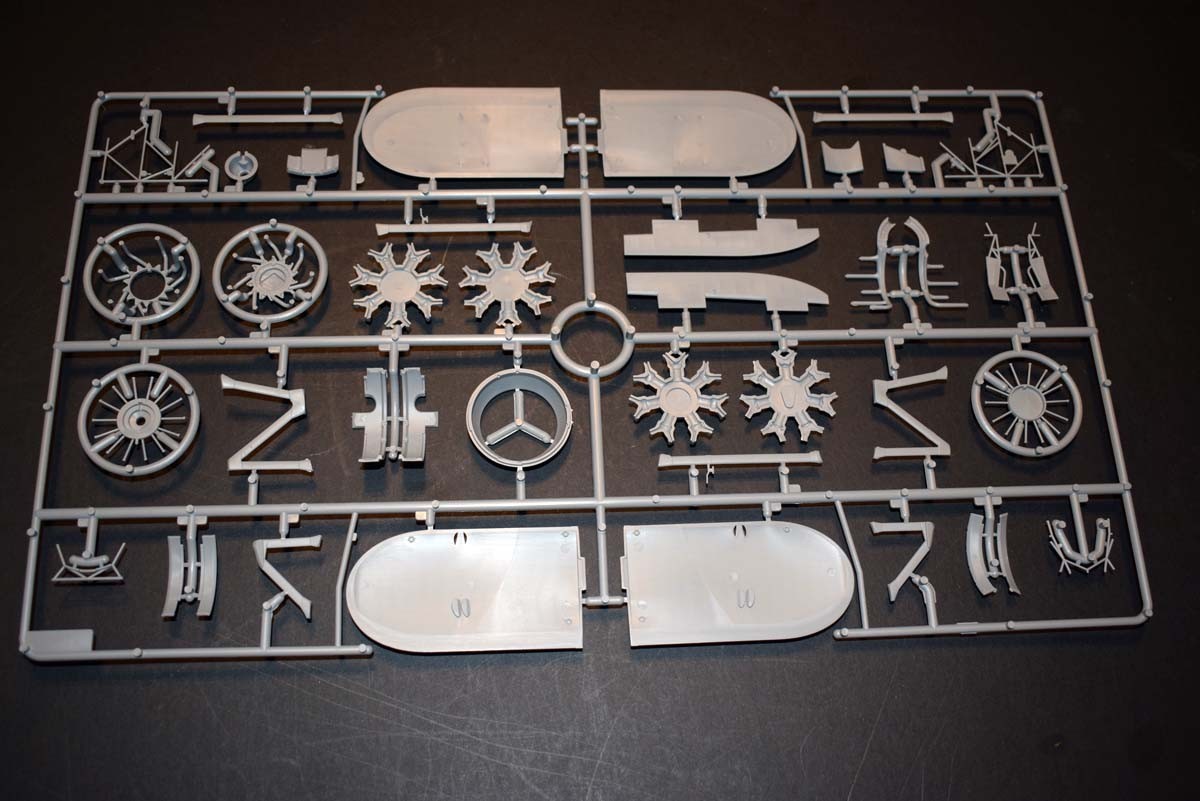


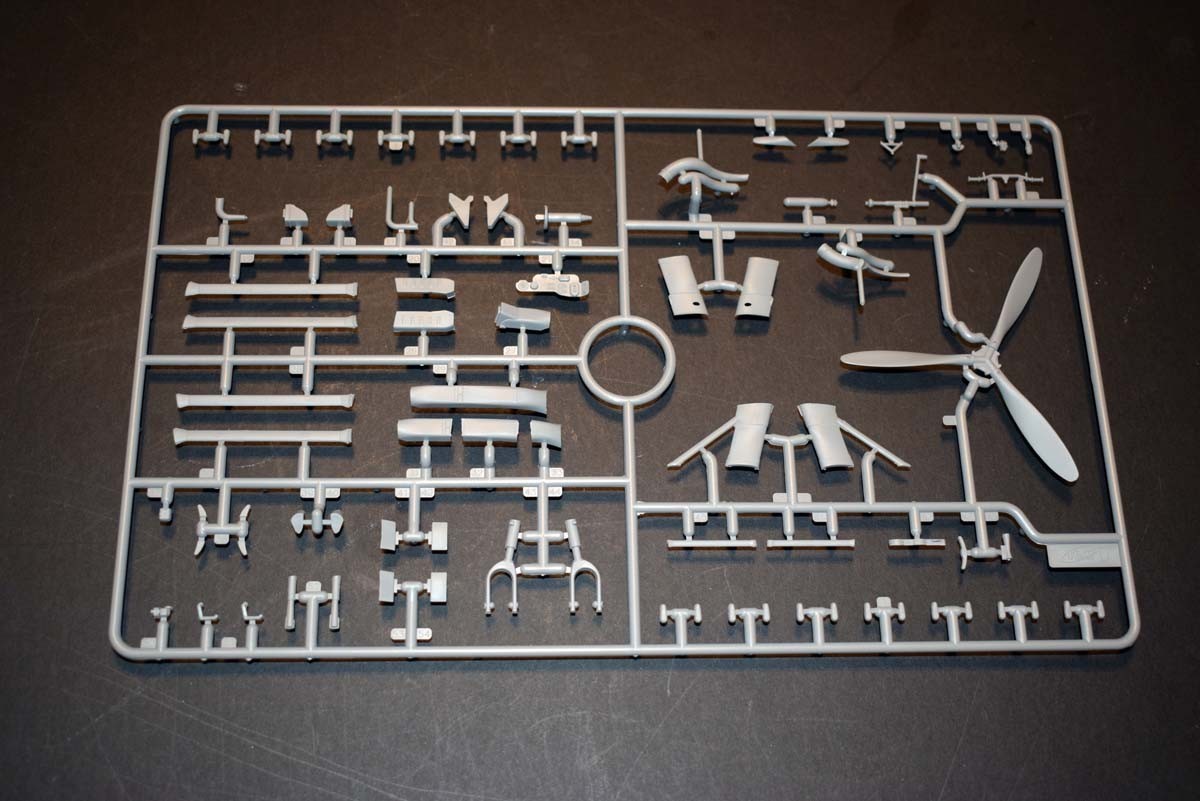



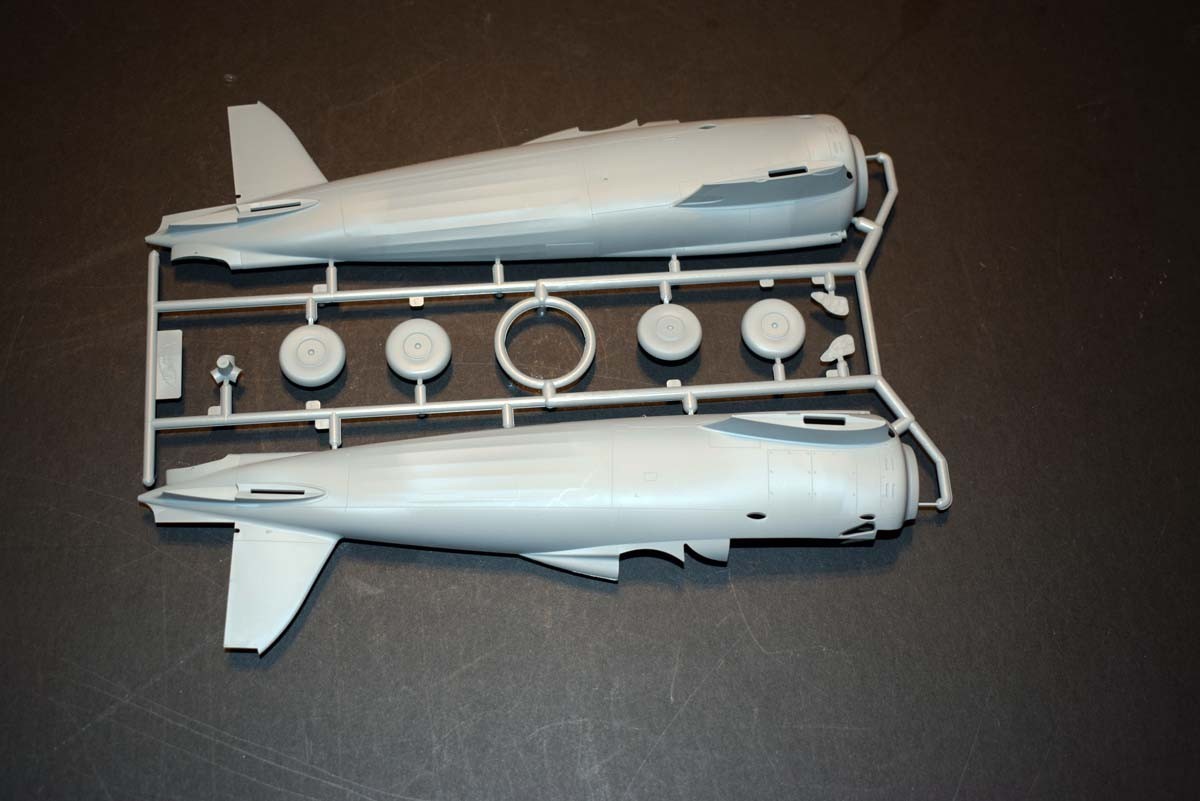

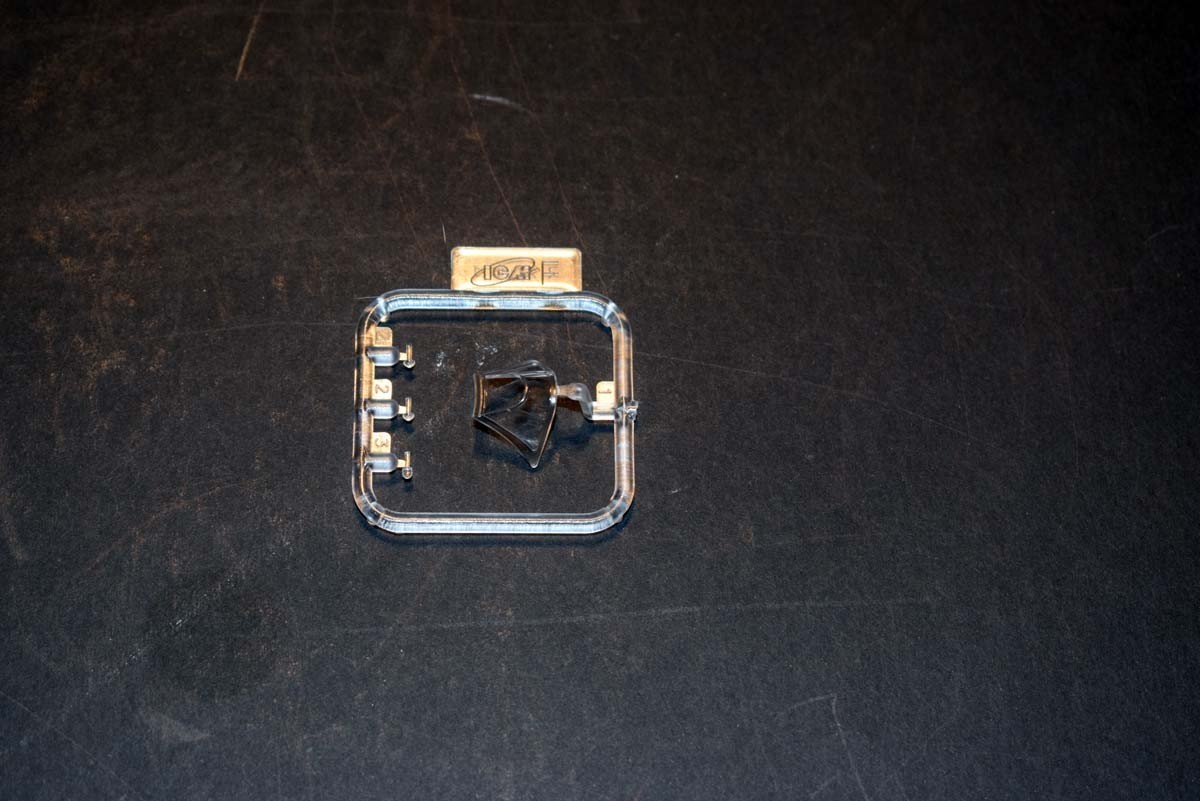
Finishing Options
ICM has provided two finishing options with this model, which I am pleased to say are very different in appearance. With the first finishing option being very reminiscent of First World War camouflage schemes, I feel that this will put the modeller to the test, and also result in the most eye catching finish. These finishing options are:
CR. 42 LW, Night Fighter Group 9, Luftwaffe, Turin, April1944
CR. 42 LW, Night Fighter Group 20, Luftwaffe, Strasberg, October 1943

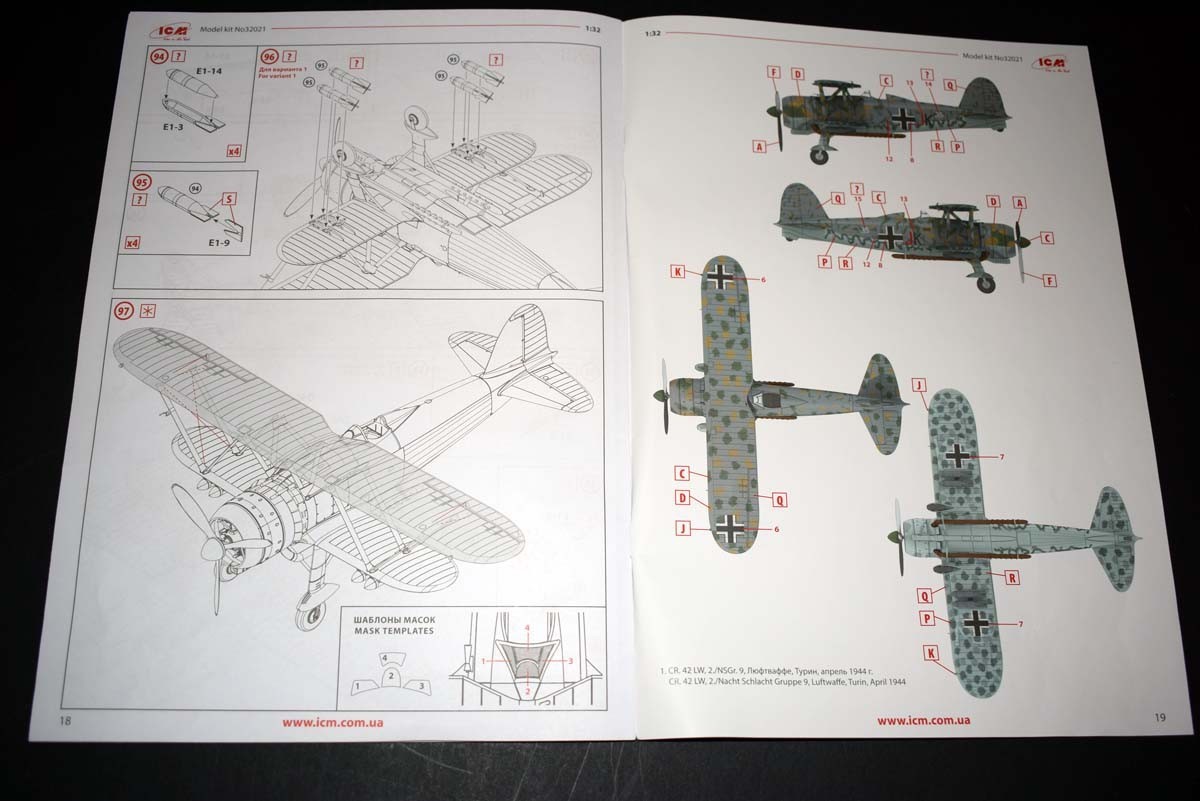

Figures
Provided in this set are three suitable German pilot figures that are suitably attired. My only concerns initially are that two of the figures, have the bulged trousers at the thigh which I do not believe would be correct for this time period, and this is a detail that I would alter in the figures. Moving to the figure that I particularly like, this one is wearing the thigh pocketed flight suit, with life preserver, and forage cap. The stance that the figure has is visually appealing and I believe will look the best with the model. The other two figures are both wearing leather flying jackets, with one having the fleeced collar, as seen on British flying jackets. The head wear, has one in an Officers peaked cap, the other again in a forage cap. Close examination of the figures reveals some seam lines that will need to be remedied and offers especially good hand and face detail. The flying boots shown on two of the figures also have especially good detail on them. The fleece collar is another nice detail, and the slightly raised insignia will aid the painting of these figures.

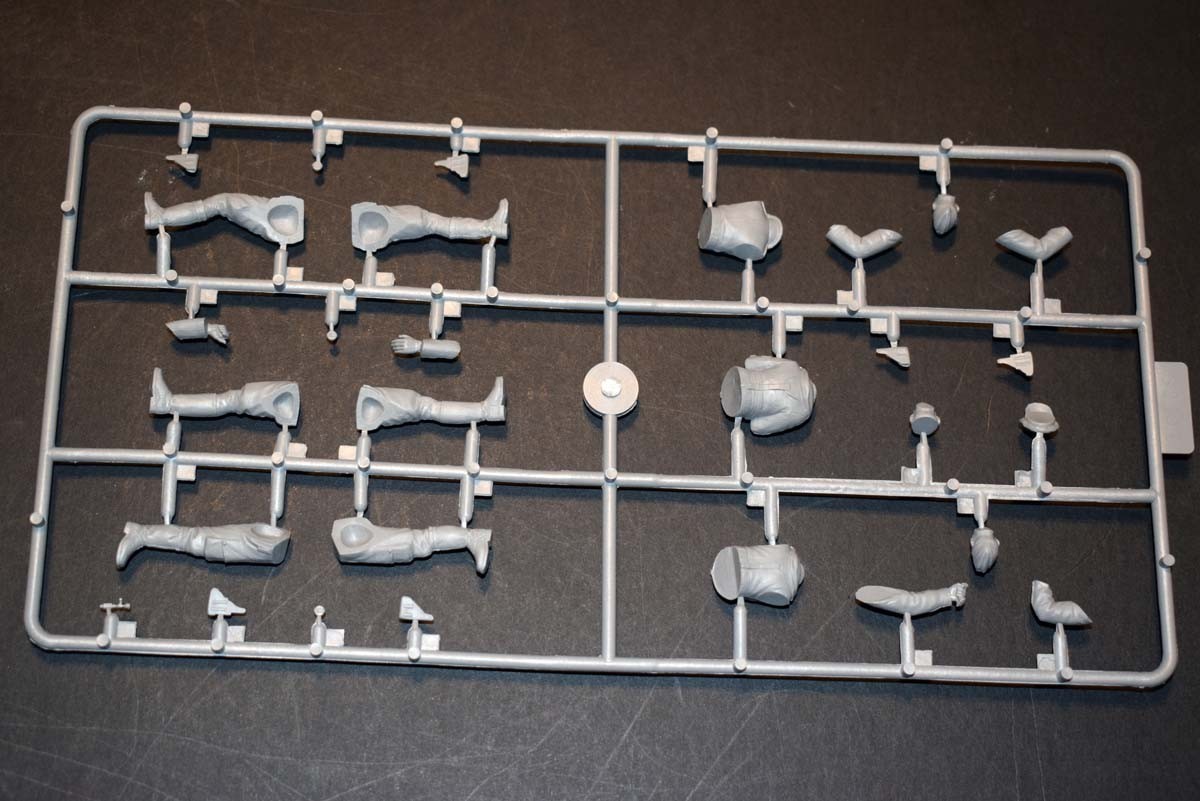
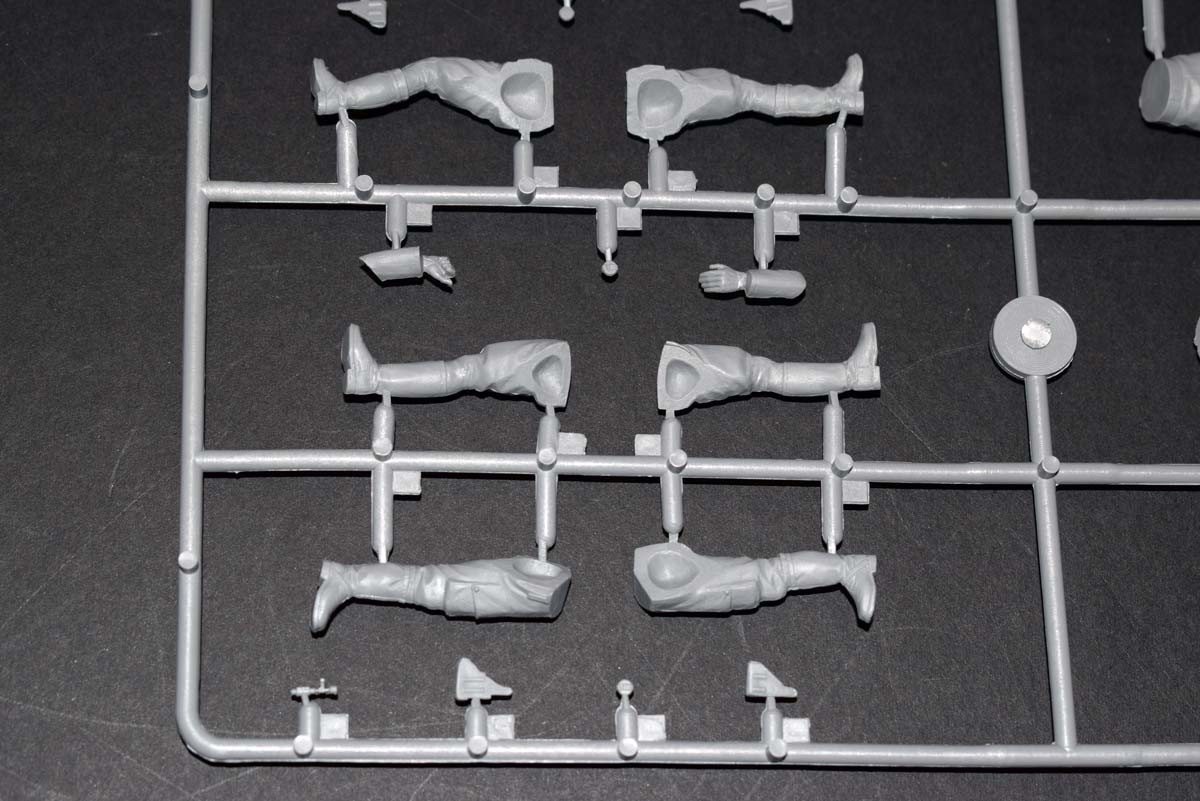
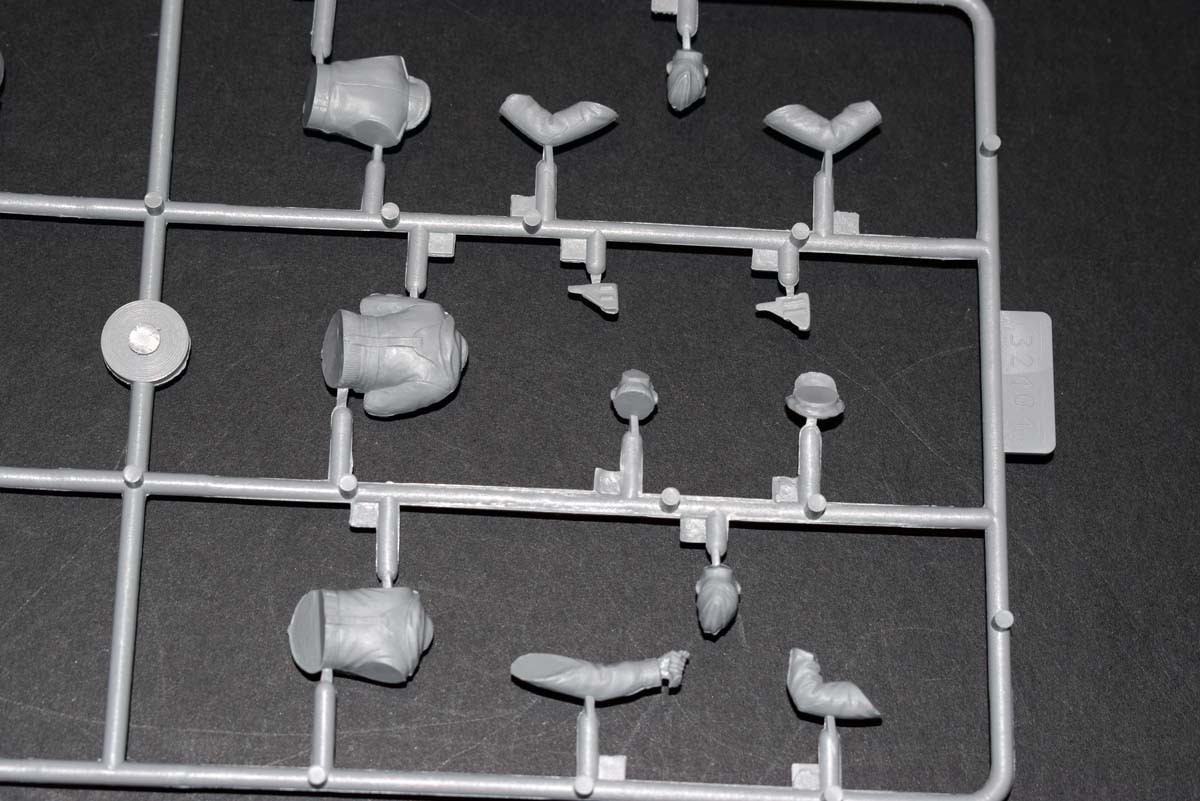

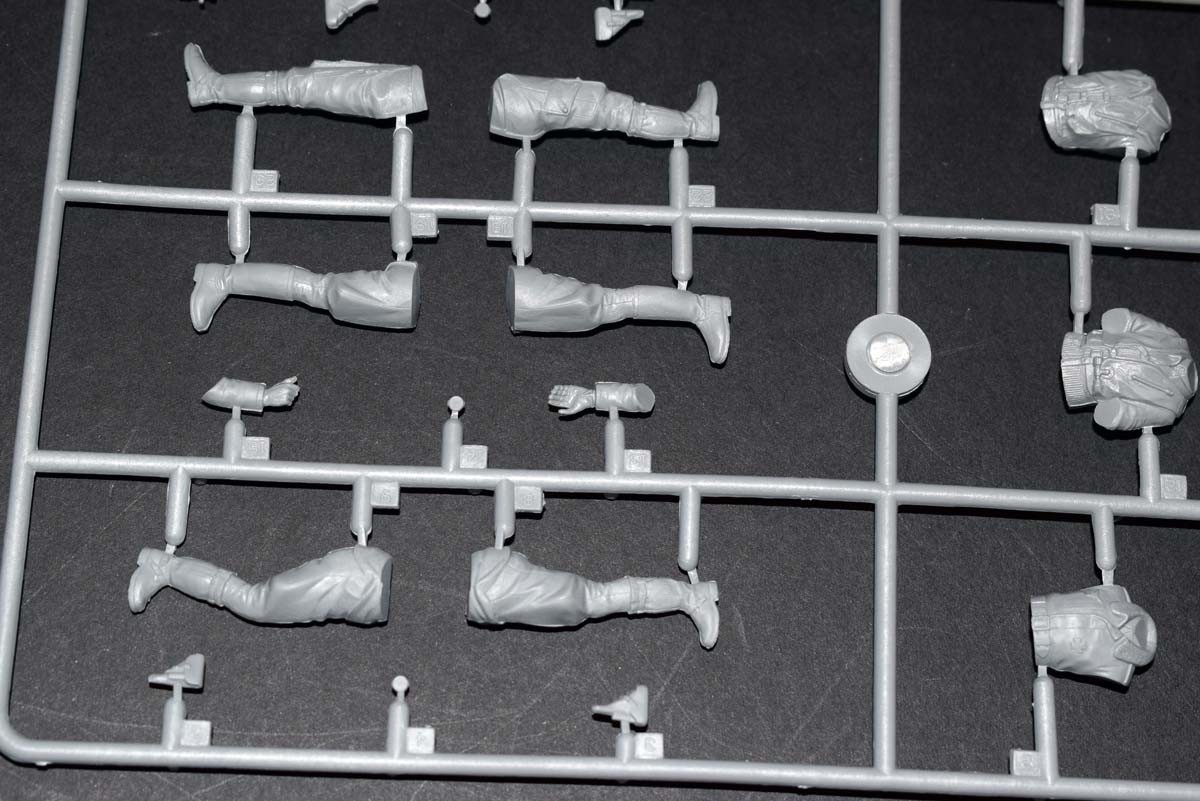
Conclusion
This offering from ICM causes me no issues or areas of concern, as regards moulding. I appreciate that ICM has provided guide wire detail and glazing patterns in the kit. A down side for me is a common feature of ICM kits in this scale, and that is a lack of harness detail for the seat. In all other respects I am happy with what is provided, but there is room for the modeller to further improve the finish of the model. I like that the finishing options cover specific locations at specific times. The figure inclusion is a pleasing plus, which offers some exceptional detail in figures of this scale in plastic, with my only concern being the bulged area of the trousers on two of them, and which it is my belief would not be present in uniform of this period.











